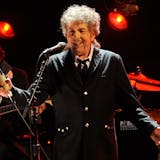When Chris Melberg's phone alarm rings at 3 a.m. Saturday, the strict choreography of opening day at his duck-camp cabin near Thief Lake in northwest Minnesota will swiftly unfold — and likely without a hitch.
Everyone, Melberg said, knows their part. His boys — Mathew, 13, Andrew, 11, and William, 10 — will quickly get dressed, waders and all, their clothing arranged in orderly piles the night before. His wife, Sarah, will prepare "duck sandwiches" — a Melberg gastronomic tradition of sausage patties slapped between two small pancakes — and fill a Thermos or two with hot cocoa or apple cider. With his 18-foot john boat and trailer already attached to his truck, Melberg will start loading gear — including his indispensable 7-year-old Chesapeake Bay retriever, Dusty. Off to the public boat landing they'll go.
"I like to have my decoys set about 45 minutes before shooting time — and I like beating the rush so I can get my spot," said Melberg, 37, of Pequot Lakes.
He said he is confident of his plan when his headlights hit the public landing, and campers then start preparing to hunt. "Getting there early gives us time to settle in the blind, watch the stars and wait for the marsh to wake up. It's fantastic."
For the Melberg clan, Saturday isn't just the duck opener. It's the duck opener on Thief Lake — a 7,100-acre shallow lake between Thief River Falls and Roseau that is part of the 55,000-acre Thief Lake Wildlife Management Area (WMA). A lake that once was critical on the continent as a bluebill stopover for food and rest as they migrated south. A lake with its own rich waterfowling history that has been overshadowed by Minnesota's more celebrated duck-hunting lakes such as Christina, Swan and Heron. A lake which was drained in the early 1900s for agricultural production (it failed miserably as a crop-producer), and is now surrounded by native vegetation and public land, helping keep it clean, shallow and aquatic-food rich for migratory birds.
"Thief Lake is underappreciated as a duck-hunting destination … and I think that's because it's in such a remote part of the state — it's probably seven hours from the Twin Cities and wasn't connected by railway decades ago like Christina and others," said Steve Cordts, Minnesota Department of Natural Resources (DNR) waterfowl staff specialist. "But it's the best public hunting area in Minnesota for ducks and it rivals any public area in the Mississippi Flyway, and that includes some of the better areas in Missouri and Arkansas."
Duck cabin
Melberg said he only knew Thief Lake by "rumors and reputation" and that he didn't start hunting there until his favorite duck holes became despoiled and bird numbers waned.
"The hunting at Thief is consistently good for a public area. The marsh is vast and has a learning curve, with lots of opportunities for both divers and puddle ducks," said Melberg. "After a few years of hunting Thief, we just fell in love with the lake and its history."


